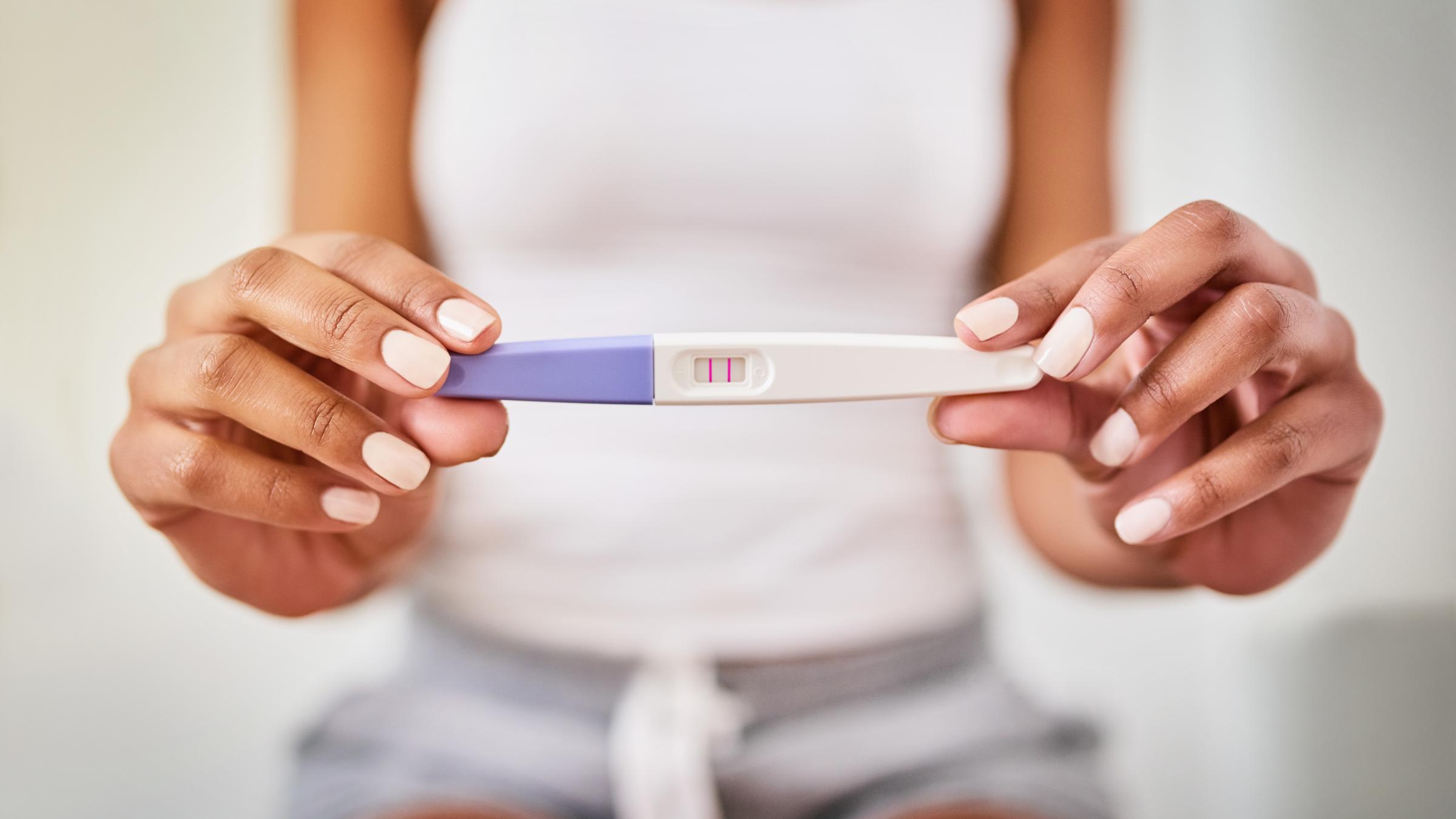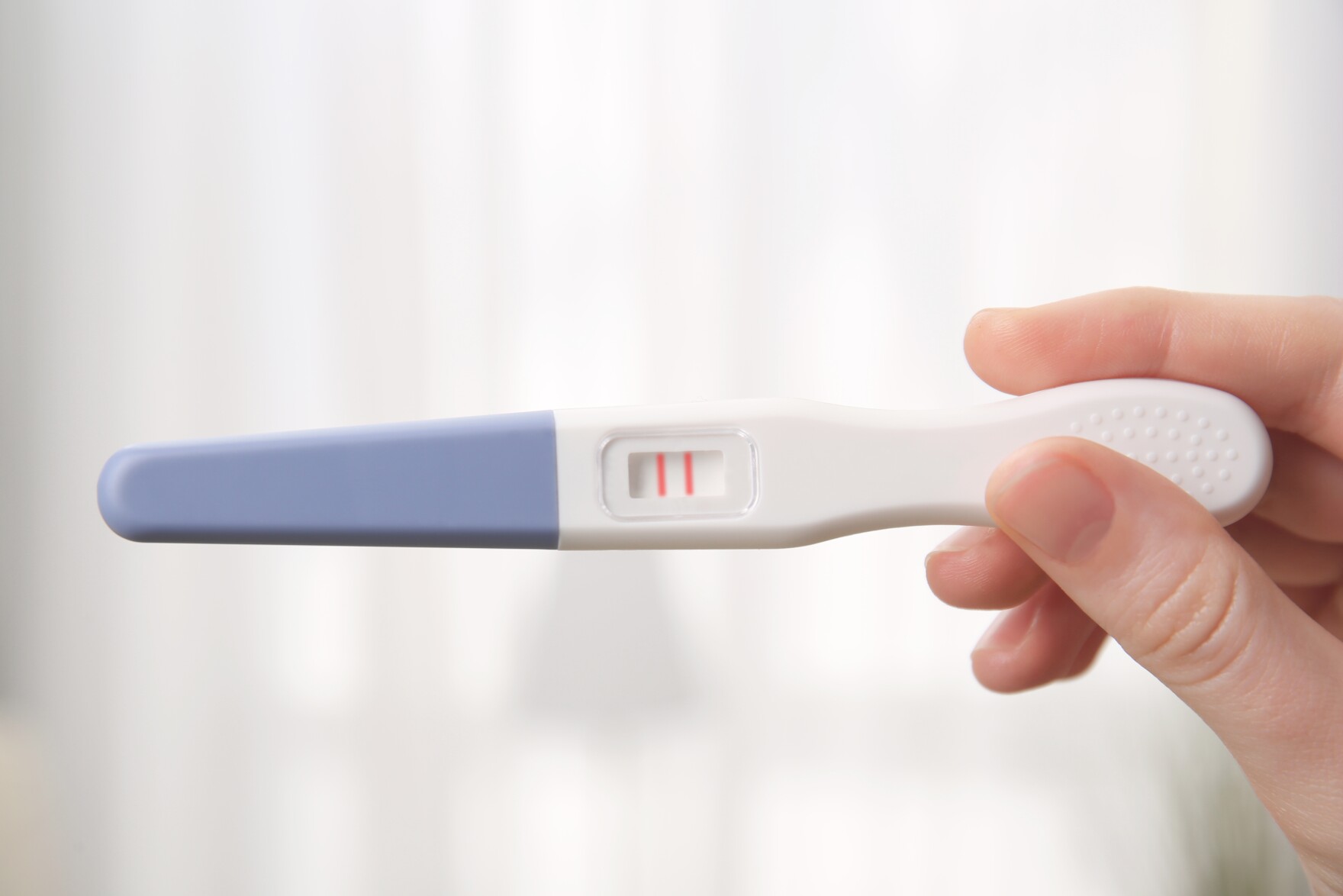Positive Pregnancy Test After Embryo Transfer

Introduction
Positive Pregnancy Test After Embryo Transfer: The momentous journey of pregnancy often begins with a flurry of emotions, ranging from anticipation to elation, uncertainty to hope. For those undergoing assisted reproductive technology (ART) treatments, such as in vitro fertilization (IVF), the culmination of these emotions reaches a crescendo with the pivotal event of the pregnancy test following embryo transfer.
A positive pregnancy test after embryo transfer signifies a triumph of science and human endeavor, encapsulating dreams of parenthood into a single line on a test strip. It marks the convergence of meticulous planning, medical expertise, and unwavering optimism in the face of adversity.
This moment is not merely about the detection of a hormone; it’s a testament to resilience, perseverance, and the profound desire for new life. It’s a beacon of hope for couples who have navigated the intricate maze of fertility treatments, enduring physical, emotional, and financial strain along the way.

How long after embryo transfer is pregnancy test positive?
You’re in the midst of an often long and emotionally-taxing journey towards conception. For many, transfer feels like the moment when things “click.” However, when it comes to how quickly you can take a pregnancy test after IVF, the answer is usually seven days after embryo transfer.
For many, the days leading up to the pregnancy test are filled with a delicate balance of cautious optimism and guarded pessimism. They try to stay busy to distract themselves from the constant thoughts of what might be, yet find it hard to focus on anything else. Every passing minute feels like an eternity, and the urge to take an early pregnancy test can be overwhelming.
However, taking a test too early can lead to inaccurate results and unnecessary heartache. It’s essential to wait until the appropriate time as advised by the fertility clinic to ensure the most reliable outcome. Until then, couples lean on each other for support, finding solace in their shared journey and the hope that their dreams of parenthood will soon become a reality.
Does a positive pregnancy test mean implantation was successful?
Implantation must occur for this hormone to be produced. If you get a positive result on a pregnancy test, then you know that implantation has taken place (since your body had started to produce the hCG hormone, and the test detected this hormone).
hCG plays a crucial role in maintaining the early stages of pregnancy. It supports the corpus luteum, a temporary endocrine structure formed after ovulation, which in turn produces progesterone. Progesterone helps to sustain the uterine lining, providing a nurturing environment for the developing embryo. Additionally, hCG signals to the body that pregnancy has occurred, prompting various physiological changes to support fetal growth and development.
When you take a pregnancy test and it yields a positive result, it indicates the presence of hCG in your urine or blood. Since hCG is only produced after implantation has taken place, a positive pregnancy test confirms that the fertilized egg has successfully implanted into the uterine lining. This moment marks the beginning of a remarkable journey towards the development of a new life.

Can you test positive 7 days after embryo transfer?
Pregnancy is sometimes detected by early home pregnancy tests as soon as five days after a transfer of a Day 5 embryo. [10] To detect pregnancy as early as possible, you’ll want to use a high-sensitivity test like the Natalist Pregnancy Test.
The Natalist Pregnancy Test is renowned for its high sensitivity, which enables it to detect lower levels of hCG earlier in pregnancy than many other home pregnancy tests. This early detection capability can provide individuals and couples undergoing fertility treatments with the earliest possible indication of pregnancy, allowing them to monitor their progress closely. Moreover, for those eagerly anticipating pregnancy, the ability to detect it at its earliest stages can alleviate anxiety and offer reassurance during the crucial early days.
In addition to its sensitivity, the Natalist Pregnancy Test is designed for ease of use and accuracy. Its user-friendly design and clear result indicators make it a popular choice for individuals seeking reliable home pregnancy testing. By providing accurate results quickly and efficiently, the Natalist Pregnancy Test offers peace of mind to those navigating the complex journey of fertility treatments and early pregnancy detection.
What are the symptoms of failed embryo transfer?
If you experience cramping that feels like menstrual pain, it might be a sign of failed implantation. Cramping and spotting after a failed implantation is your body expelling the embryo after it failed to attach to the uterine wall. Listen to your body and pay attention to any unusual sensations during this time.
Aside from cramping resembling menstrual pain, other symptoms might accompany failed implantation. Spotting or light bleeding, often referred to as implantation bleeding when successful, can occur after failed implantation as well. This bleeding may be lighter and shorter than a typical period, but it’s essential to note any deviations from your usual menstrual patterns.
Emotional changes can also occur during this time. You may experience feelings of disappointment, sadness, or frustration. It’s essential to acknowledge and process these emotions while also seeking support from loved ones or healthcare professionals if needed.
What does a positive pregnancy test after embryo transfer mean?
A positive pregnancy test following embryo transfer is a significant milestone in the journey of assisted reproduction. It signifies that the embryo(s) transferred during in vitro fertilization (IVF) have successfully implanted in the uterine lining, leading to the initiation of pregnancy. This result indicates that the embryo has attached itself to the uterine wall and started releasing hormones, typically human chorionic gonadotropin (hCG), which is detected by the pregnancy test.
For many individuals and couples struggling with infertility, a positive pregnancy test brings immense joy and relief after a period of uncertainty and anticipation. However, it’s essential to remember that while a positive result is promising, it does not guarantee a successful pregnancy outcome. Factors such as the embryo’s viability, the mother’s health, and other medical considerations still play a crucial role in the pregnancy’s progression.
After receiving a positive pregnancy test result, it’s vital to follow up with your fertility specialist for further monitoring and support throughout the early stages of pregnancy.
How soon can you take a pregnancy test after embryo transfer?
The timing for taking a pregnancy test after embryo transfer can vary depending on the type of embryo transfer procedure performed and the preferences of the fertility clinic. Typically, patients are advised to wait for approximately 10 to 14 days after the embryo transfer before taking a pregnancy test. This waiting period allows sufficient time for the embryo to implant in the uterine lining and for hCG levels to rise to a detectable level in the bloodstream and urine.
Taking a pregnancy test too early, before hCG levels have had a chance to rise adequately, can result in false-negative results, leading to unnecessary stress and disappointment. On the other hand, waiting too long may prolong anxiety and uncertainty for individuals eager to know the outcome of their fertility treatment.
It’s essential to follow your fertility clinic’s guidelines regarding when to take a pregnancy test after embryo transfer and to resist the urge to test prematurely, as it may lead to inaccurate results and unnecessary emotional distress.
What factors can affect the accuracy of a pregnancy test after embryo transfer?
While pregnancy tests are highly sensitive tools for detecting the presence of hCG hormone in urine or blood, several factors can influence their accuracy following embryo transfer.
One crucial factor is the timing of the test. Taking a pregnancy test too early, before hCG levels have had a chance to rise sufficiently, can result in a false-negative result. Conversely, waiting too long to take the test may lead to unnecessary anxiety and anticipation.
Another consideration is the type of pregnancy test used. While home pregnancy tests are convenient and readily available, they may vary in sensitivity and reliability. Blood tests conducted at a fertility clinic or laboratory tend to be more accurate and can detect lower levels of hCG earlier than urine tests.
What should I do after receiving a positive pregnancy test result following embryo transfer?
Receiving a positive pregnancy test result after embryo transfer is an exciting and emotional moment for individuals and couples undergoing fertility treatment. After celebrating this milestone, it’s essential to take several steps to ensure the best possible outcome for the pregnancy.
First and foremost, schedule a follow-up appointment with your fertility specialist to confirm the pregnancy and initiate prenatal care. Your doctor will likely perform additional tests, such as blood tests to monitor hCG levels and ultrasound scans to assess the embryo’s development and confirm its location within the uterus.
During this early stage of pregnancy, it’s crucial to prioritize your health and well-being. This includes maintaining a healthy lifestyle, including a balanced diet, regular exercise, and adequate rest. Avoiding alcohol, tobacco, and recreational drugs is essential for supporting the healthy growth and development of the fetus.

Conclusion
A positive pregnancy test following embryo transfer is a culmination of hope, perseverance, and the wonders of science. It represents the triumph of determination over adversity, turning the dreams of parenthood into tangible reality. Beyond its clinical significance, this moment marks the beginning of an extraordinary journey filled with anticipation, love, and boundless joy.
As the journey progresses, each milestone becomes a cherished memory, each flutter a testament to the miracle of life. It’s a journey marked by anticipation, excitement, and perhaps moments of trepidation, but above all, it’s a journey filled with immeasurable love and hope for the future.
Moreover, a positive pregnancy test is not just about the individuals directly involved; it resonates within families, communities, and beyond, reminding us all of the power of perseverance and the beauty of new beginnings.
Ultimately, the journey from a positive pregnancy test to holding a newborn in one’s arms is a testament to the resilience of the human spirit and the unwavering belief in the possibility of miracles. It’s a journey that reaffirms the profound truth that amidst life’s uncertainties, hope can blossom, dreams can come true, and love can conquer all.




